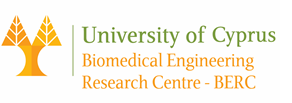 |
THEORETICAL AND COMPUTATIONAL BIOPHYSICS LABORATORY |
"Advancing Science and Health via Biomolecular Simulations"Associate Professor Georgios Archontis has 30 years of experience in biomolecular simulations and is among the developers of the widely used biomolecular program CHARMM (Chemistry at Harvard Molecular Mechanics). He obtained a Bachelor’s degree in Physics from the University of Athens (1987) and a PhD in Theoretical and Computational Biophysics from Harvard University (1994). Since 1996, he has been teaching and conducting research at the University of Cyprus. He has supervised the research of 6 post-doctoral researchers, 4 Ph.D. students, 6 Masters students and 12 undergraduate students. His research has been supported by 17 competitive research grants, which have financed student stipends and the purchase of a high-performance Computational Cluster. His current research investigates: (1) the conformational and thermodynamic properties of protein complexes by MD simulations and free-energy methods with explicit- and implicit-solvent models. (2) The development and use of accurate and efficient methods for protein- and ligand design calculations; (3) the formation of peptide-based nanostructures; (4) the structural and thermodynamical properties of electrolyte solutions by simulations with polarisable force fields; He has also investigated protein dielectric relaxation and proton-binding phenomena by continuum electrostatics methods.
Associate Professor Georgios Archontis Theoretical and Computational Biophysics Laboratory Physics Department at University of Cyprus |
High-throughputComputational protein designA main area of my research focuses on the development and application of high-throughput Computational Protein Design (CPD) methods. CPD calculations aim to assess a large number (109-1010) of protein sequences and conformations in a few hours, using a desktop computer. Key ingredients for the efficiency and accuracy of CPD calculations are the employed energy function, and the sequence/ conformation sampling method. Over the years, we have developed and tested extensively a physics-based energy function that preserves the protein geometry via molecular mechanics terms and includes solvent effects via sophisticated continuum electrostatics (Generalized Born) terms, supplemented by terms that model solvent modification of nonpolar interactions. Sampling of sequences and conformations is achieved by Monte Carlo protocols, augmented by procedures that accelerate sampling. The CPD calculations are implemented in the Proteus 3.0 CPD software, that is being developed at Ecole Polytechnique by the group of our long-term scientific collaborator, Prof. Thomas Simonson. Over the years we have actively contributed to the development of the Proteus energy function and algorithms. Proteus is freely available for academic and government scientists from the website address https://proteus.polytechnique.fr, and a detailed description of the program capabilities and some recent applications are included in recent reviews [1]. A notable recent application by us investigated mutations that increase the affinity of the SARS-CoV coronavirus receptor binding domain (RBD) for the human angiotensin converting enzyme 2 (hACE2). Our MD simulations and CPD calculations predicted a set of charge-modifying mutations and a set of key RBD substitutions that affected the SARS-CoV-2 affinity for hACE2. Some of these mutations were observed later in virus strains with higher human infectivity. The results were described in [2] and were highlighted as “New and Notable”. |
Biomolecular simulations of Protein complexes with potential applications in medicine and engineeringA significant part of my research activities employ Molecular Dynamics (MD) simulations to investigate the structural and dynamical properties of protein complexes, with interest in medicine and engineering. MD simulations have emerged as a very detailed, and complementary to experiments, method for the investigation of biomolecular properties, and the interpretation of experimental results. A main recognition of the method has been the award of the Nobel Prize in Chemistry (2013) to its pioneering developers Martin Karplus (Harvard), Michael Levitt (Stanford) and Arieh Warshel (USC). We have participated in the development of the MD software Chemistry at Harvard Molecular Mechanics (CHARMM) [3], which was developed at the laboratory of my PhD supervisor, M. Karplus. Over the years, we have employed this software in numerous investigations of protein complexes. Notable examples include: 1) The computational and rational design of potential inhibitors of the complement protein C3, based on the compstatin peptide. These inhibitors have promising applications for the development of improved therapeutics for age-related macular degeneration, and other complement system-mediated diseases (see eg. [4]). 2) The study of peptides with the capacity to self-assemble into nanostructures with potential engineering interest (see eg. [5]). 3) The design of potential inhibitors of glycogen phosphorylase, that is a target for the development of type 2 diabetes treatments. |

|
SELECTED GRANTS
|
SELECTED PUBLICATIONS
|
